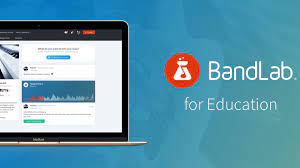Introduction:
Specialist schools have been developed to provide students with an education that focuses on a specific subject or field. While such schools offer a unique opportunity for students to develop their skills and prepare for future careers, the financial implications of attending these institutions are often overlooked. This article examines the costs and benefits of enrolling in a specialist school, as well as the potential financial burden on families and government funding systems.
Costs of Attending Specialist Schools:
One of the primary financial considerations when attending a specialist school is the cost of tuition. As these schools focus on specific subjects, many employ experienced professionals with specialized knowledge and expertise, which can lead to higher tuition fees than those charged by traditional schools. Additionally, there might be added costs for specialized equipment or resources necessary for advanced learning in the particular field.
Impact on Families:
The financial burden associated with sending a child to a specialist school generally falls on the family in the form of tuition, housing, uniforms, and other expenses. Depending on the family’s socio-economic status, this burden can be significant. Scholarships and grants may be available to help cover some costs, depending on the merit or financial need of individual students. Nevertheless, many families still face considerable expenses even after receiving financial aid.
Government Funding and Long-Term Implications:
While specialist schools often receive some government funding, there is debate over whether these allocations should be increased or if resources should be directed towards improving public education for all students. Opponents argue that investing more in specialist schools might result in elitism within the education sector and reinforce existing socio-economic disparities.
On the other hand, proponents believe that adequately supporting specialist schools can increase opportunities for gifted students to excel in their chosen fields. They argue that strengthening these institutions could have long-term economic benefits by producing a skilled workforce with expertise in specific industries.
Benefits of Attending Specialist Schools:
Though there are financial implications to consider, numerous benefits are associated with specialist schools. Students attending these institutions often have access to higher-quality resources and learning opportunities tailored to their needs. Moreover, they typically benefit from more personalized attention from educators who have extensive expertise in their discipline.
Conclusion:
The financial implications of attending specialist schools merit thoughtful consideration by families, policymakers, and educators. While these institutions offer unique educational experiences, the associated costs must be weighed against the benefits to determine if they represent an equitable and effective approach to education in the long term.
It’s crucial for key stakeholders to work together in implementing strategies that reduce the financial burden on families while ensuring that specialist schools receive adequate funding. This would enable more students to access world-class education and optimize their potential in their chosen fields without compromising social equity and broader economic well-being.











